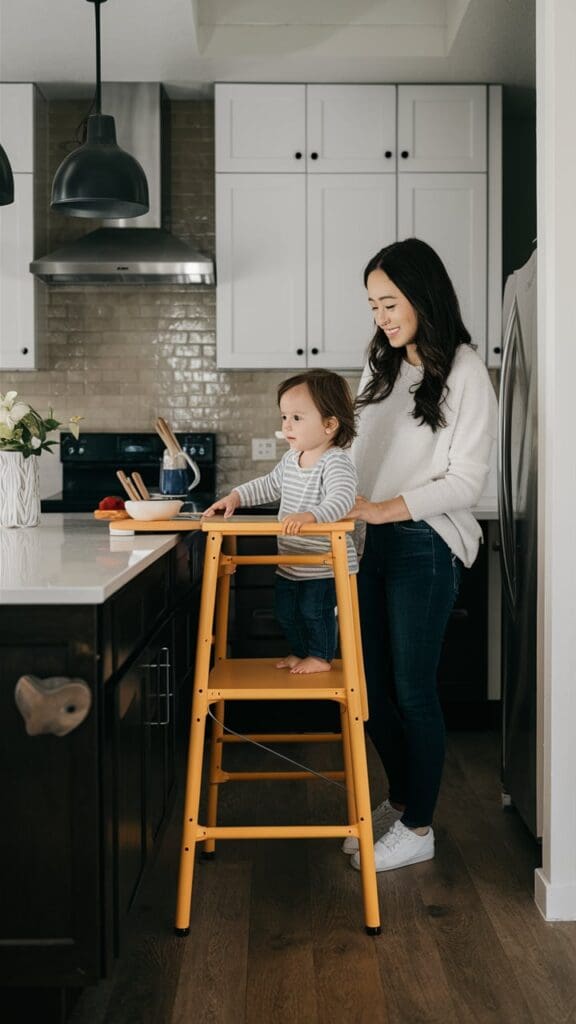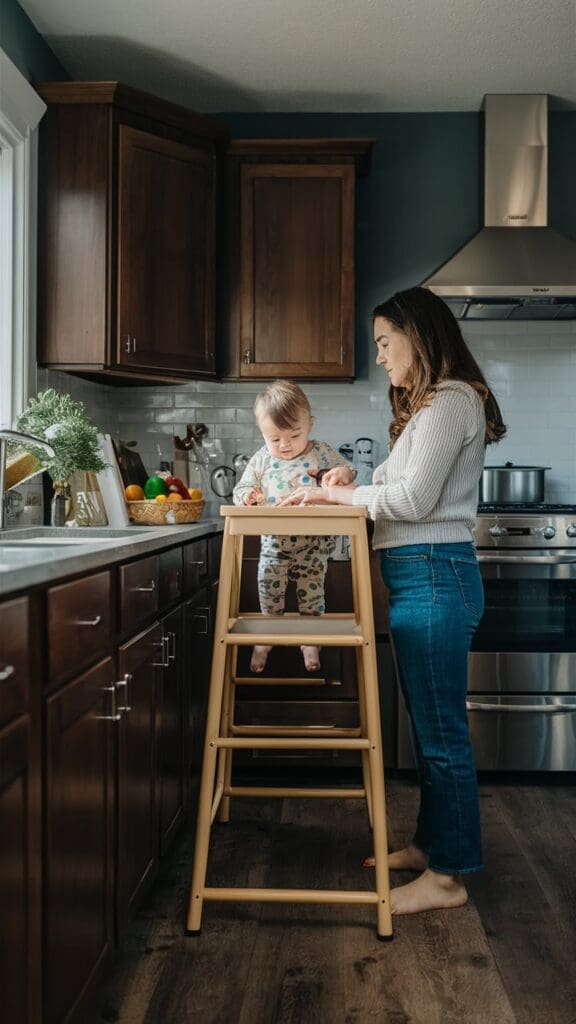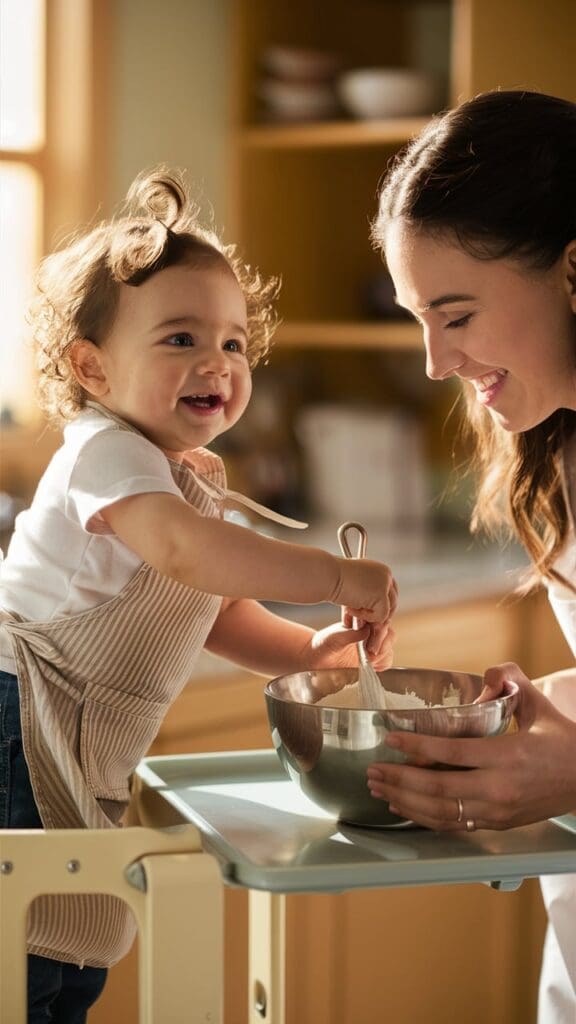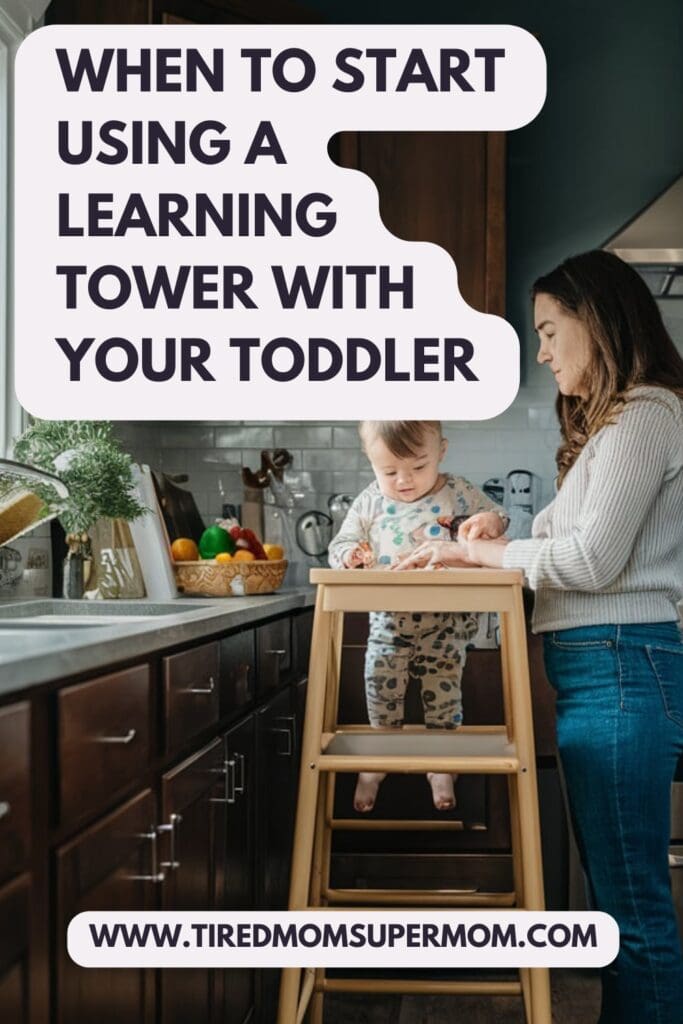7 Signs Your Toddler Is Ready for a Learning Tower (Best Learning Tower Age Guide)
Wondering if your toddler is ready for a learning tower? The answer depends on more than just age — it’s about motor skills, curiosity, and safety. In this guide, we’ll break down the ideal learning tower age, signs of readiness, safety tips, and the best products to support your child’s independence.
✅ Quick Summary: What’s the Best Learning Tower Age?
Most toddlers are ready for a learning tower between 12 to 18 months — as soon as they can stand steadily on their own and follow simple instructions. Every child develops at their own pace, so look for signs of physical readiness over a specific age number.
Heads up: This post may include affiliate links. As an Amazon Associate, I earn from qualifying purchases—at no extra cost to you. Full privacy policy and disclosure here.

Why a Learning Tower Is a Game-Changer
A learning tower is a secure step-up stool that allows toddlers to reach counters and tables safely. It helps toddlers:
- Develop independence in the kitchen and during routines
- Strengthen gross motor skills
- Engage in family activities without being held or confined
- Boost confidence through participation
Think of it as a Montessori-inspired helper that grows with your child.
Signs Your Child Is Ready for a Learning Tower
Instead of focusing solely on age, check for these developmental signs:
🟢 Physical Readiness
- Can stand independently for 30+ seconds
- Walks steadily, with minimal falls
- Climbs onto low furniture with ease
🧠 Cognitive Readiness
- Follows simple safety instructions like “Hold the handle”
- Shows interest in what you’re doing at the counter
- Has a sense of boundaries and can understand basic limits
If your toddler meets most of these milestones, they’re likely at the right learning tower age.
What’s the Safest Learning Tower Age Range?
While some children are ready as early as 12 months, others may not benefit until closer to 18–24 months. The tower is most useful up to age 4 or 5, after which kids can typically use a basic step stool.
🛑 Avoid introducing a learning tower if your child:
- Doesn’t understand basic directionsducing a learning tower.
- Can’t stand without support
- Climbs uncontrollably

Choosing the Best Learning Tower by Age
Here’s how to match the best product with your child’s developmental stage.
👶 12–18 Months: Just Getting Started
Recommended Product:
👉 Little Partners Learning Tower – sturdy with tall sides, designed for younger toddlers.
Look for:
- Adjustable height
- Enclosed sides for support
- Wide, stable base
🧒 18–36 Months: Confident Explorers
Recommended Product:
👉 Guidecraft Kitchen Helper Tower – foldable and includes safety netting.
Look for:
- Easy climb-in design
- Removable platform covers
- Foldable for space-saving
🧠 3–5 Years: Independent Kitchen Helpers
Recommended Product:
👉 Piccalio Mini Chef Convertible Tower – converts to a table, perfect for older toddlers.
Look for:
- Convertible options (e.g. step stool to chair)
- Sleek designs that blend into your home
- Taller height for big kids
Safety Tips for Using a Learning Tower
Even at the right learning tower age, safety comes first:
- Always supervise your child while in the tower
- Place it away from hot stoves, sharp objects, or heavy appliances
- Lock wheels or use non-slip pads if needed
- Teach your child how to climb in and out safely
✅ Bonus tip: Place a small kitchen rug or mat underneath to soften slips.designated space for children to engage in activities.

Fun Ways to Use a Learning Tower
Once your toddler is safely using the tower, make the most of it! Try:
- Cooking together – stirring, pouring, taste-testing
- Washing fruits and veggies
- Brushing teeth at the sink
- Helping with laundry
- Crafts and sensory play at counter height
💡 Need more ideas? Check out our Best Games to Play with Dolls and let your toddler role-play while you cook!
Pros and Cons of Using a Learning Tower Early
| Pros | Cons |
|---|---|
| Builds independence early | Risk of falls if unsupervised |
| Reduces parent fatigue | Can take up space |
| Enhances motor skills | Not suitable for all toddlers |
| Encourages family bonding | Needs supervision and training |
Outgrowing the Learning Tower: What’s Next?
Once your child reaches 5 years old, you may notice:
- They no longer need the side rails
- They’re using step stools with ease
- They want more autonomy in the kitchen
Transition to a lower, non-enclosed stool and continue encouraging safe independence.
Recommended Accessories
Enhance your learning tower experience:

Helpful Resources
- 🧼 18 Genius Beach Day Hacks for Kids
- 💤 How to Finally Stop Night Terrors in Children
- 🌐 My Happy Helpers Guide to Learning Towers
- 🌐 The Bump’s Learning Tower Roundup
📌 Final Thoughts: When Is the Right Learning Tower Age?
The best learning tower age is when your toddler is physically and cognitively ready — typically around 12–18 months. With the right tower and proper supervision, this tool can make your daily routines more inclusive, fun, and educational.
🎯 Your Turn!
Do you have a learning tower at home? At what age did your child start using it? Share in the comments below — your story could help another parent!
And don’t forget to Pin this post to save for later!
❓ FAQ: Learning Tower Age
What age can a baby use a learning tower?
Babies typically aren’t ready for a learning tower until 12 months or older, once they can stand independently and understand basic safety instructions.
Is a learning tower safe for 1-year-olds?
Yes — if they meet physical readiness milestones. Choose a model with high sides and never leave your toddler unsupervised.
Can a 2-year-old still use a learning tower?
Absolutely! Age 2–3 is the prime time to maximize a learning tower’s benefits — confidence, participation, and independence soar during this age.
When should you stop using a learning tower?
Most kids stop using them by age 5, once they can reach counters safely with a basic stool and no longer need the enclosed support.
Are learning towers worth it?
Yes — especially for busy parents who want to keep toddlers engaged while cooking or cleaning. It promotes safe, hands-on learning.
Pin this for later!

